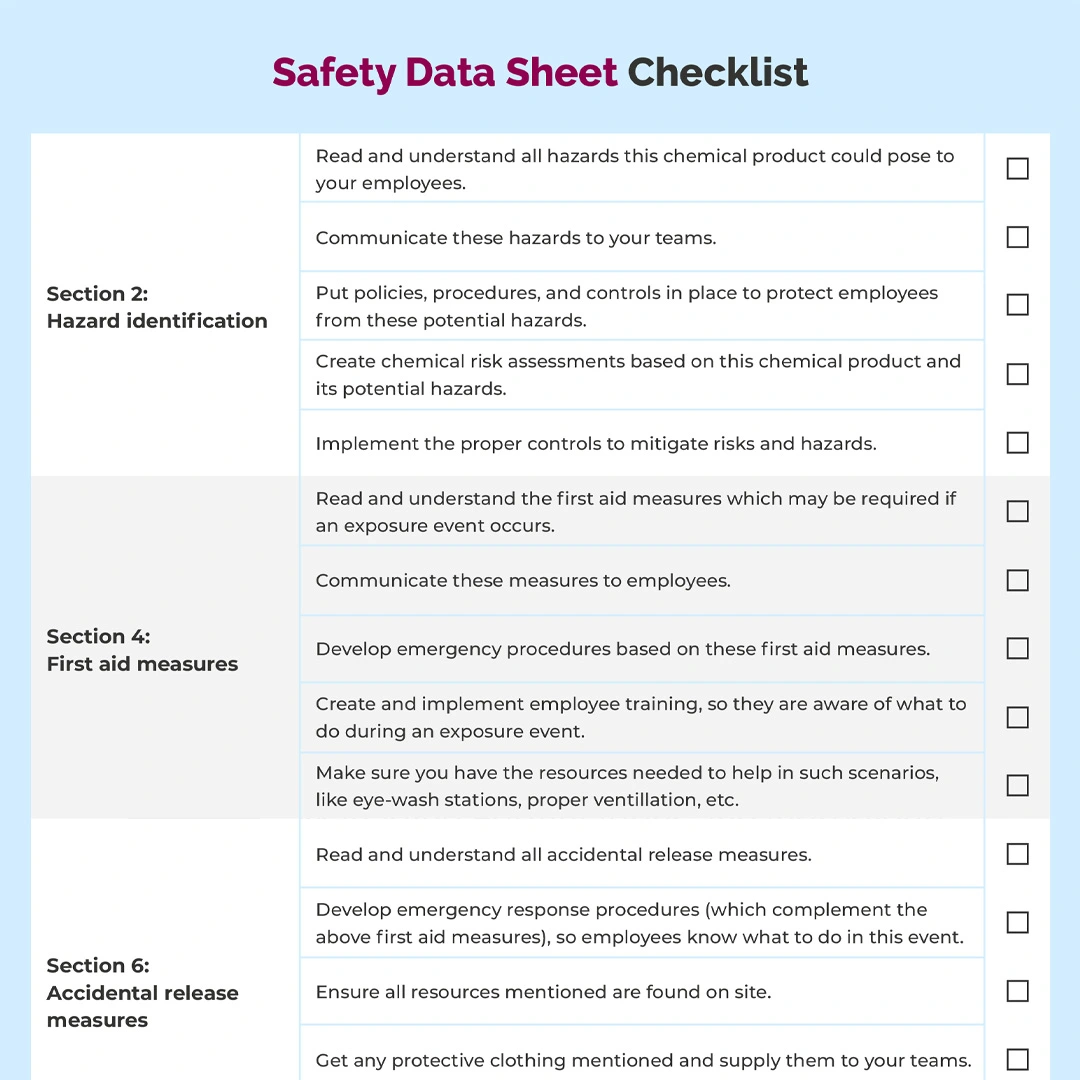Why have I received a Safety Data Sheet (SDS)?
You have received the SDS because the substance or mixture falls under the hazardous classification stipulated in the CLP Regulation (EU) No 1272/2008, which holds legally binding status in the EU and EEA. In Great Britain, this regulation remains in effect as the GB CLP Regulation.
Substances or mixtures warrant a hazardous classification when they meet precise criteria as defined by the CLP Regulation. These hazards are categorised into three primary classes: physical, health, and environmental. Within these classes, you will find further divisions into specific hazards. For example, under the physical hazard class, you encounter 16 additional categories, including explosives, flammable gases, and corrosive to metals. These categories are then subdivided into different severity levels, with flammable gases classified as Category 1A, 1B, and 2 based on their associated risk levels.
What is the purpose of the Safety Data Sheet (SDS)?
The first things to check when you receive a Safety Data Sheet (SDS)
Here are the initial checkpoints when you receive an SDS:
- Ensure the SDS is provided in either paper or electronic format.
- Confirm that the SDS is provided free of charge.
- Verify that it is available in the official language/s of the Member State where the substance is placed on the market.
- Look for clarity, conciseness, and consistency in the SDS format.
- Ensure that all 16 sections are present, and there are no blank sections. If a section is blank, there should be a justification provided.
- Note the date of issue or reissue and the version number, typically on the first page.
- Check for page numbers and the extent of the SDS (e.g., ‘Page 1 of 8’).
- Remember that the SDS must be retained for 10 years, including any updates.
- In case of an updated SDS for a specific substance, inform suppliers and make updates within 12 months.
- Be aware that any changes in the SDS should be summarised in Section 16.
But with so much information in an SDS, where should you begin? After ensuring all these aspects have been verified, the next step is to direct your attention to critical information found within the safety data sheet. The sections deserving of the highest priority include Sections 2, 4, 6, 7, 8, 10, and 13.
The significance of hazard classification for fragranced goods
Why these sections in the Safety Data Sheet (SDS) are important?
- Section 2 – Hazard Identification: This section provides a quick overview of the hazards associated with the substance. Understanding these hazards is crucial for immediate risk assessment and proper handling.
- Section 4 – First Aid Measures: In case of an accident or exposure, knowing the appropriate first aid procedures can be essential to safeguard human health. This section offers vital guidance for immediate response.
- Section 6 – Accidental Release Measures: It details what to do if there is an accidental spill or release of the substance. Quick and effective response can prevent harm to people and the environment.
- Section 7 – Handling and Storage: Proper handling and storage are key to minimising risks. This section offers instructions to safely manage the substance, reducing the chances of accidents or exposure.
- Section 8 – Exposure Controls/Personal Protection: Understanding how to protect yourself and your team from exposure is essential. This section outlines exposure limits and recommends personal protective equipment (PPE).
- Section 10 – Stability and Reactivity: Knowing how the substance behaves under various conditions helps prevent accidents and unwanted reactions. It is vital to ensure safe storage and usage.
- Section 13 – Disposal Considerations: Disposing hazardous materials incorrectly can lead to environmental harm and legal issues. Section 13 provides essential information on proper disposal methods.
Conclusion
In this blog, we have highlighted the critical steps for ensuring safety and compliance in your workplace. To recap the key points from our discussion:
- First, we learned about the importance of verifying the essential details of the SDS, from its format to its completeness, and the significance of checking for updates when necessary.
- Next, we explored the pivotal sections of the SDS that should be your top priority. These sections, including Hazard Identification, First Aid Measures, and Handling and Storage, hold the key to understanding the substance’s properties, hazards, and the steps to take in case of emergencies.


